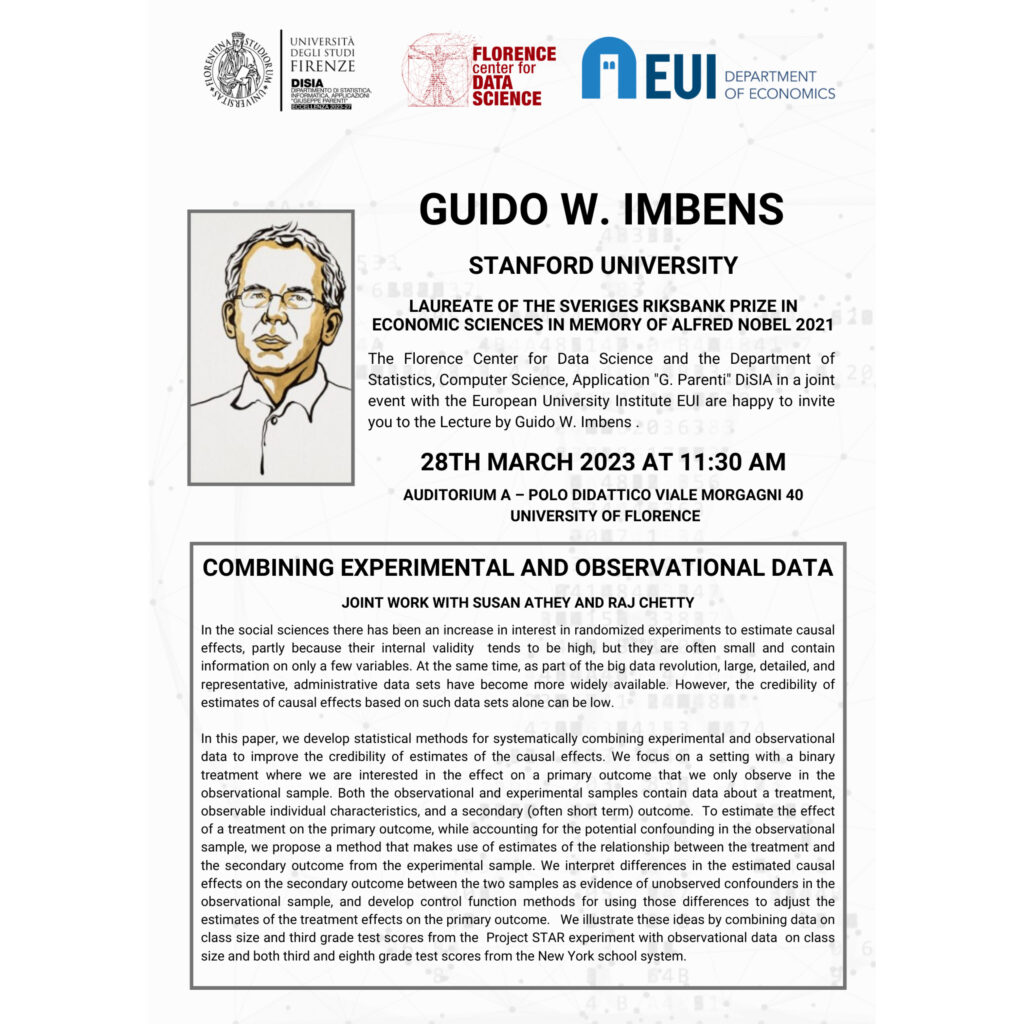The Florence Center for Data Science and the Department of Statistics, Computer Science, Application “G. Parenti” DiSIA in a joint event with the European University Institute EUI are happy to invite you to the Economics Lecture by Nobel Prize 2021: Guido W. Imbens.
The event will take place Tuesday 28th March 2023 from 11:30 to 12:45 at Auditorium A – Polo Didattico, Viale Morgani,40 – Università degli Studi di Firenze
The event does not require prior registration.
Title: Combining Experimental and Observational Data
Presented by Guido W. Imbens (Stanford University), Nobel Prize in Economics 2021
Abstract:
In the social sciences there has been an increase in interest in randomized experiments to estimate causal effects, partly
because their internal validity tends to be high, but they are often small and contain information on only a few variables. At the same time, as part of the big data revolution, large, detailed, and representative, administrative data sets have become more widely available. However, the credibility of estimates of causal effects based on such data sets alone can be low. In this paper, we develop statistical methods for systematically combining experimental and observational data to improve the credibility of estimates of the causal effects. We focus on a setting with a binary treatment where we are interested in the effect on a primary outcome that we only observe in the observational sample. Both the observational and experimental samples contain data about a treatment, observable individual characteristics, and a secondary (often short term) outcome. To estimate the effect of a treatment on the primary outcome, while accounting for the potential confounding in the observational sample, we propose a method that makes use of estimates of the relationship between the treatment and the secondary outcome from the experimental sample. We interpret differences in the estimated causal effects on the secondary outcome between the two samples as evidence of unobserved confounders in the observational sample, and develop control function methods for using those differences to adjust the estimates of the treatment effects on the primary outcome. We illustrate these ideas by combining data on class size and third grade test scores from the Project STAR experiment with observational data on class size and both third and eighth grade test scores from the New York school system.
Co-author: Susan Athey and Raj Chetty
